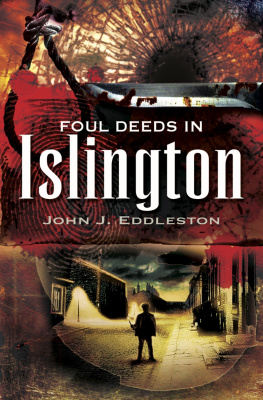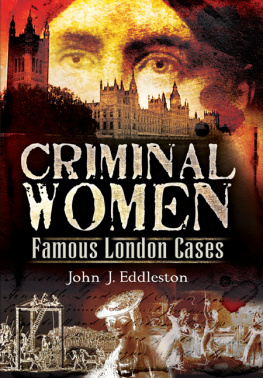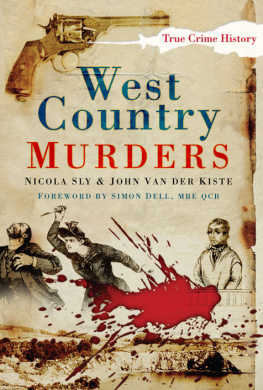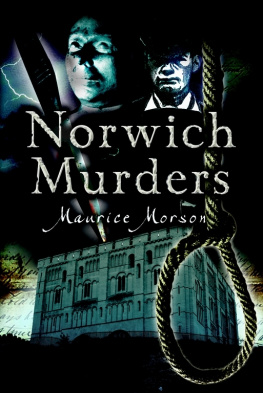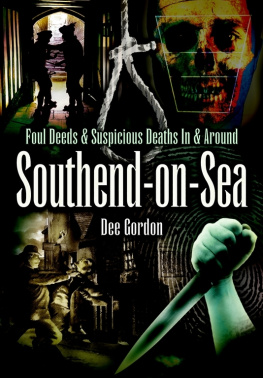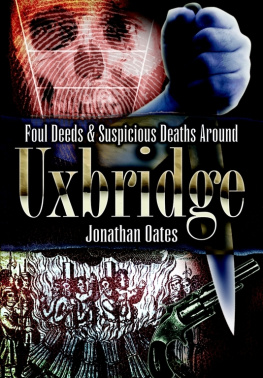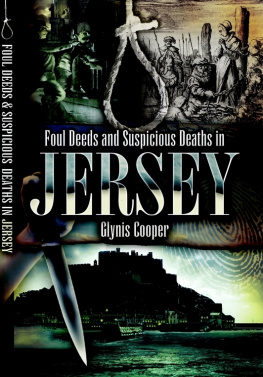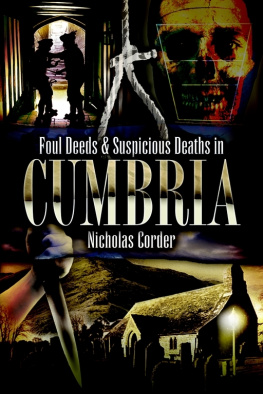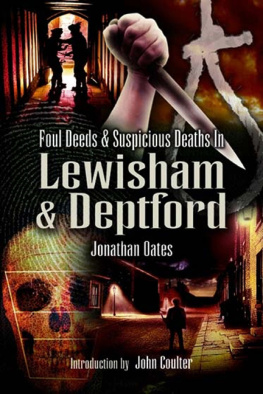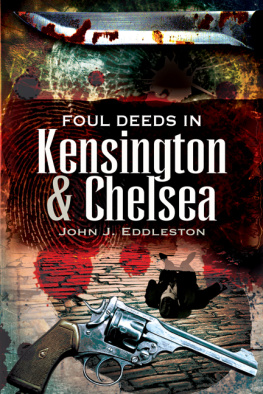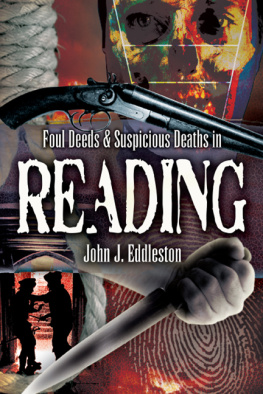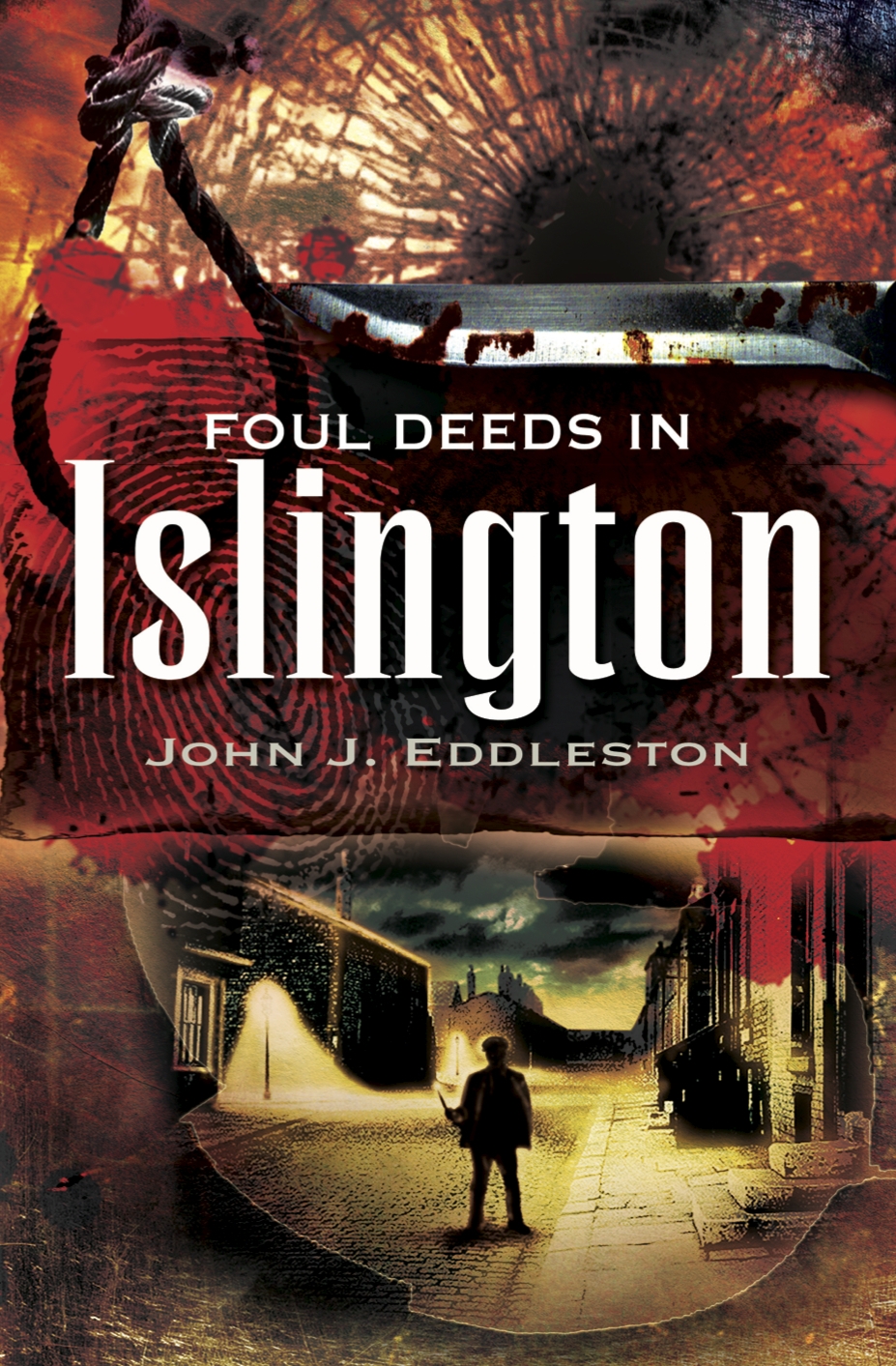I would like to offer my thanks to my wife, Yvonne, who proofread the entire book before submission, helped with the original research, and assisted with suggestions for improvements in many of the chapters.
My thanks must also go to the staff of The National Archives at Kew. They always provide a first-class, professional service, and it is always a pleasure to work there.
Finally, I must thank Alison Spence, an archivist at the Cornwall Record Office, for her assistance with the research on George Nicholls Simmons, for the chapter on William Henry Clarke.
Chapter 1
Henry Asher
1836
O n the late afternoon of Wednesday 2 March 1836, between 5.00pm and 5.30pm, seven-year-old Edward Soall was playing, by himself, close to the gutter at the edge of the pavement, at the top end of Park Street, (now renamed Islington Park Street).
Suddenly, a dray turned into Park Street and travelled, at some speed, on the wrong side of the road. Edward Soall had his back to the dray, and did not see how close it was to him. When the dray had passed by, the broken body of Edward Soall was left lying half on the pavement, with his legs in the gutter. He was unconscious, and obviously very badly injured.
A gentleman named Frederick Cooper saw the accident, and ran to the childs aid. Lifting him gently, Cooper carried Edward to the surgery of William Burroughs, at 1 Park Street. The unfortunate child died there, fifteen minutes later. During the time that Edward was being attended to by the doctor, the driver of the dray was brought in, by others who had seen the tragedy. The man, Henry Asher, was arrested and charged with manslaughter.
Henry Asher faced his trial on 4 April 1836. The first witness was Frederick Cooper, the man who had taken the stricken child to the doctors surgery.
Cooper told the court that he had seen that Edward Soall had been on the right-hand side of the street, when the dray turned into Park Street, travelling at a very fast pace. The driver, Henry Asher, was sitting on the cross-bar, on the left side of the dray and did not appear to be in command of the horse. In effect, the animal was running wild, and bore off towards the right side of the street, and Asher had apparently been powerless to prevent it. Cooper could not tell if it had been the horse, or the dray itself, which struck the boy, but he ran over to him as soon as he saw the boy lying stricken on the pavement. After carrying Edward to the doctors, Cooper waited to see how he was, and was present when the boy died. He was also present when Cooper was brought into the surgery, and Dr Burroughs told him that he had just killed a child.
Henry Marsh, the next witness, was at the bottom of Park Street, and saw the dray when it turned into it. He also believed that the contraption was not under the control of the driver, and travelling far too fast. Marsh did not see the accident itself, but did notice Edward lying in the street after the dray had passed.
Thomas Godbold, a baker, lived in Park Street, almost opposite to where Edward Soall was hit. After the accident he had called out to Asher to stop, but he seemed not to hear and carried on down the street. Godbold followed the carriage and saw it turn into Cross Street. It was there that he spoke to the driver, and told him that he had just knocked a child down in Park Street. At first, Asher refused to go back to the scene, but eventually he agreed to go. Godbold ended his evidence by stating that, in his opinion, Asher was under the influence of drink at the time.
Dr William Burroughs confirmed that Edward Soall had been unconscious when he was brought into the surgery by Frederick Cooper. He died within fifteen minutes and, the following day, Dr Burroughs made a post-mortem examination. The boy had two fractured ribs on the right side. One rib had punctured the right lung and this had caused some twelve ounces of blood to drain into the chest cavity. Dr Burroughs believed that, severe though the injuries were, they would have been even worse if the wheel of the dray had run over the boy. In his opinion, the injury had been caused by a blow from the horses hooves, striking Edward in his back and pushing him violently to the ground.
At about the same time as Edward Soall died, Henry Asher was brought into the surgery. Dr Burroughs asked him his name, and Asher replied that his name was of no consequence and he would not reveal it. Dr Burroughs then asked Asher if the dray were his own, and he confirmed that it was. Burroughs found this unlikely and demanded to know who his master was. Again, Asher refused to give out any information. It as then that the doctor sent for the police.
Constable William Stotter was the officer who arrived at the surgery and took charge of Asher. Stotter also believed that Asher was tipsy, but despite that, and the fact that he had just run over a small boy, Asher was allowed to drive his dray to the police station, where he was charged with manslaughter.
In his own defence, forty-one-year-old Henry Asher could only say: I am very sorry for what has occurred, but I am innocent of it. I knew nothing of it at all until I was stopped and went back. I did not refuse to go back. but went quietly, and made every offer of recompense that I could.
It was not enough to sway the jury who found Asher guilty of manslaughter. He was then sentenced to the rather lenient total of six months in jail.
Chapter 2
William Madden
1838
S ome time in January 1838, nineteen-year-old William Madden, a costermonger, was involved in a violent assault on his own brother. One of the main witnesses against Madden, at the later court hearing, was James Wallis. It was his evidence that largely convicted Madden who, because he could not post bail, was then sent to prison. As he was taken down to the cells, Madden swore that he would have his revenge upon Wallis.
William Madden was released from prison on Wednesday 7 February and immediately decided to seek retribution against the man, who he believed was responsible for his spell in jail. He spent the rest of that day searching for Wallis but did not find him until the early evening.
It was around 5.00pm, as Ann Whittington walked along Lower Road, Islington, and as she approached the corner of Britannia Row, she saw a two men squaring up to each other. One of them, a man she would later identify as William Madden, struck the other man three or four times around the head. This second man, later shown to be James Wallis, fell to the ground, insensible. This assault was also seen by William Payne, a hairdresser, of 19 Lower Road, and a friend of Wallis.
James Wallis could not be roused so Payne, and a number of other men, carried him to the surgery of Dr Robert Martin, at 10 Cross Street. Dr Martin made a careful examination, but could find no marks of violence, apart from a little black mark underneath Walliss left ear, and a few minor scratches on his face. Dr Martin could not, however, rouse his patient and, later that same evening, James Wallis died. William Madden now found himself facing a murder charge.
The inquest on the dead man opened two days later, on 9 February, at the Kings Head public house, also on Lower Road. The proceedings began with a brief history of the previous trouble between Madden and Wallis. Madden had struck his brother and then been charged with assault at the Hatton Garden police station. After Wallis had given evidence that Madden was the instigator of the trouble, he was sent to prison and, as he was taken down, Madden was heard to say that he would do for Wallis just as soon as he regained his freedom.

